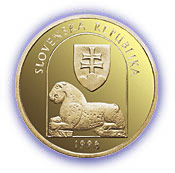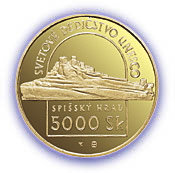-
NBS Tasks
Browse topics
- Monetary policy
- Financial market supervision
- Financial stability
- Banknotes and coins
- Payments
- Statistics
- Research
- Legislation
-
Publications
- Activity Report of the NBS Innovation Hub Annual Report Carbon Footprint Report of NBS Climate-related disclosures of NBS non-monetary policy portfolios Economic and Monetary Developments Financial Stability Report Investment Policy Statement of the National Bank of Slovakia Macroprudential Commentary
- Policy Briefs Report on the Activities of the Financial Market Supervision Unit Research Papers: Working and Occasional Papers (WP/OP) Statistical Bulletin Structural Challenges Other publications Sign up for your email notifications about publications
- About the Bank
- Media
- Frequently asked questions
-
For the public
Browse topics
- About the Bank
- Exchange rates and interest rates
- Banknotes and coins
- Payments
- Financial stability
- Financial market supervision
- Statistics
- Legislation
-
Publications
- Activity Report of the NBS Innovation Hub Annual Report Economic and Monetary Developments Financial Stability Report Macroprudential Commentary
- Report on the Activities of the Financial Market Supervision Unit Research Papers: Working and Occasional Papers (WP/OP) Statistical Bulletin Other publications Sign up for your email notifications about publications
- Frequently asked questions
- Media
- Careers
- Contact
UNESCO World Heritage – Spišský Hrad and the Associated Cultural Monuments
5 000 Sk commemorative gold coin


The Spiš Castle (Spišský hrad) is the most extensive medieval castle in Slovakia, and with an area of more than four hectares, one of the largest castle complexes in Europe. Its existence is first recorded in a written document issued by King Andrew II in 1209. At that time, the castle was the administrative, economic and cultural centre of Spiš. The original Romanesque stone castle was built at the end of the eleventh, or beginning of the twelfth century on the side of a prehistoric hillfort and underwent many alterations in the Romanesque-Gothic, Gothic and Renaissance styles. Until 1464 it belonged to the Kings of Hungary, and later to the Zápoľský, Thurzo and Csáky families. In the 18th century it lost its military significance and began to decay. After a fire in 1780 it gradually fell into ruin.
In 1961 the Spiš Castle was declared a national cultural monument, and in December 1993 it was added to the UNESCO World Heritage List, together with the cultural monuments in its surroundings – Spišská Kapitula, Spišské Podhradie and the early Gothic Church of the Holy Spirit at Žehra.
-
Coin description
Obverse:
The dominant motif on the obverse of the coin is the Romanesque sculpture of a white lion from the Cathedral of St. Martin at Spišská Kapitula. The coat of arms of the Slovak Republic is placed in a stylised Romanesque window, around which is the inscription SLOVENSKÁ REPUBLIKA.
Reverse:
The reverse of the coin shows the Spiš Castle, placed in a Romanesque window, around which is the inscription SVETOVÉ DEDIČSTVO UNESCO (UNESCO World Heritage). The name SPIŠSKÝ HRAD and the face value of the coin are placed below.
-
Coin details
Designer: Pavel Károly Material: Au 900, Ag 100 Weight: 9.5 g Diameter: 26 mm Edge: finely milled Producer: Kremnica Mint (Slovak Republic) Issuing volume: 6,000 in proof quality